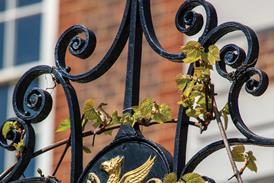Hurrying through Bordeaux airport last September, I spotted the chairman of a very smart London wine merchant waiting to board my plane. After a fair bit of manoeuvring on my part I managed to catch up with him, not least because I was interested to hear his opinion on the 2004 vintage, a year that, on the basis of what I had just tasted, was perplexingly underrated.
He agreed, but strangely I found him uninterested in discussing the various merits of recent vintages. He had just heard about a ‘behind closed doors’ meeting of a group of worried vignerons in Saint Emilion. By all accounts they had gathered to discuss the issue of grape varieties, and whether they should lobby for a law that would allow them to plant more exotic grape varieties in the Bordeaux appellation. Under the proposals being discussed, out would go merlot, cabernet franc and cabernet sauvignon, and in would come syrah, tempranillo and sangiovese. Coming from a tiny pocket of land that has given the world some of the most sublime and sought-after wines in the world, it was an extraordinary loss of confidence.
‘You know what you should be writing about, Will?’ he said as we taxied to the runway. ‘Identity.’ In a world where grapes are grown from the slopes of Kenya’s Lake Naivasha to the foothills of the Andes, the role of identity will have to play a more important role than ever. But what he had observed throughout his career was the systematic purchase of many of Bordeaux’s most sought-after chateaux by outsiders, in many cases large financial institutions such as the insurance giant AXA – a trend prevalent in the Scotch whisky industry in recent years.
‘There are hardly any families left in the Médoc these days,’ he lamented. ‘All the old characters have sold, the temptation to cash in being just too great.’ Having spent their money in Bordeaux, the financial houses, he warned, are turning their eyes towards Burgundy and are eyeing up Italy with a view to getting a foothold in Barolo.
This is a worrying trend, for what makes these regions great is not large cash-rich foreign ownership but tender loving care by generations of families. It is only after meticulous work in the vineyard and decades of experience that one understands which soils react best to which varietal clone, how the weather affects certain patches of vineyard and which vines yield the ripest grapes. Of late, many of my fellow critics have bemoaned the globalisation and standardisation of wines in the bottom end of the market. Now it seems we are in real danger of losing this individuality at the level to which everyone from wine enthusiast to producer aspires – the top.
This subject has been revisited recently by fellow wine writer Robert Joseph. In a lecture to the Wine Communicators of Australia, Joseph lamented the trend in Australia of imitating the great European wines. He said: ‘Far too many Australian wineries are becoming more European than the Europeans, throwing away the skills with which they achieved so much overseas success.’ His gripe is that they are producing an increasing number of tempranillos, nebbiolos and barberas, which are just not up to the quality or value for money of their European counterparts. It is a trend I have also noted. Australia made its name on good-value, easy-to-drink, easy-to-understand oakey chardonnay and jammy shiraz. Why change that? All of a sudden they want to introduce regionality, break into the ‘premium sector’ and experiment with often unsuitable grape varieties – in many cases ditching oak all together. As any well-run business will tell you, sticking to the knitting, or what you do best, is paramount. Deviate from that and you are on a slippery slope to ruin.
One country with a real identity problem is South Africa. The British market, being the most important for the country, leaned heavily on South Africa in the early post-apartheid years. Offering support and advice, we tended to steer them clear of the jammy, oak-driven style of the New World. Many listened, but the sheer diversity and number of South African wine styles today illustrate that not everyone listened.
As a consumer, the answer lies in buying wines that reflect a sense of place. As one prosecco producer recently told me, the Venetians have been enjoying it for decades, long before anyone thought about marketing strategies. Perhaps this view is best encapsulated in Tuscany by legendary winemaker Paolo De Marchi at the Isole e Olena vineyard. ‘Be innovative by all means,’ he said, ‘but make wine of individual quality and the connoisseurs will come. It is the vineyard, not the wine maker, that is the star.’
Wines of the week
Le Soula Blanc 2006, Vin de Pays des Côtes Catalanes, FranceUnderstated, elegant and fresh. Exceptionally easy to drink, it has a sumptuous, rounded feel almost like a white Rhone or white Burgundy.
£21.99
Chianti DOCG 2006, Piccini, Italy 12.5%
A first impression throws up a spicy, peppery wine that can seem a little overpowering. The distinctive bitter flavour that is familiar to Italian reds soon disappears, leaving unctuous, voluptuous flavour with plenty of red fruit characteristics.£5.99
The Holy Trinity 2003, Grant Burge, Barossa Valley, South Australia 14.5%
This is a legendary Rhone blend of Grenache, Shiraz and Mourvèdre, the type of dense, spicy wine one has with a bowl of piping hot stew after a day in the fields. Warming notes of wild thyme, cedar and the earthy character of the forest floor; the finish is dry, masculine and full. This will go on drinking for at least 15 years.£16.75
- Stockists: Sainsbury’s; Tesco; Raeburn Fine Wines, Edinburgh, 0131 343 1159, www.raeburnfinewines.com
Will Lyons is wine correspondent for Scotland on Sunday newspaper





























No comments yet